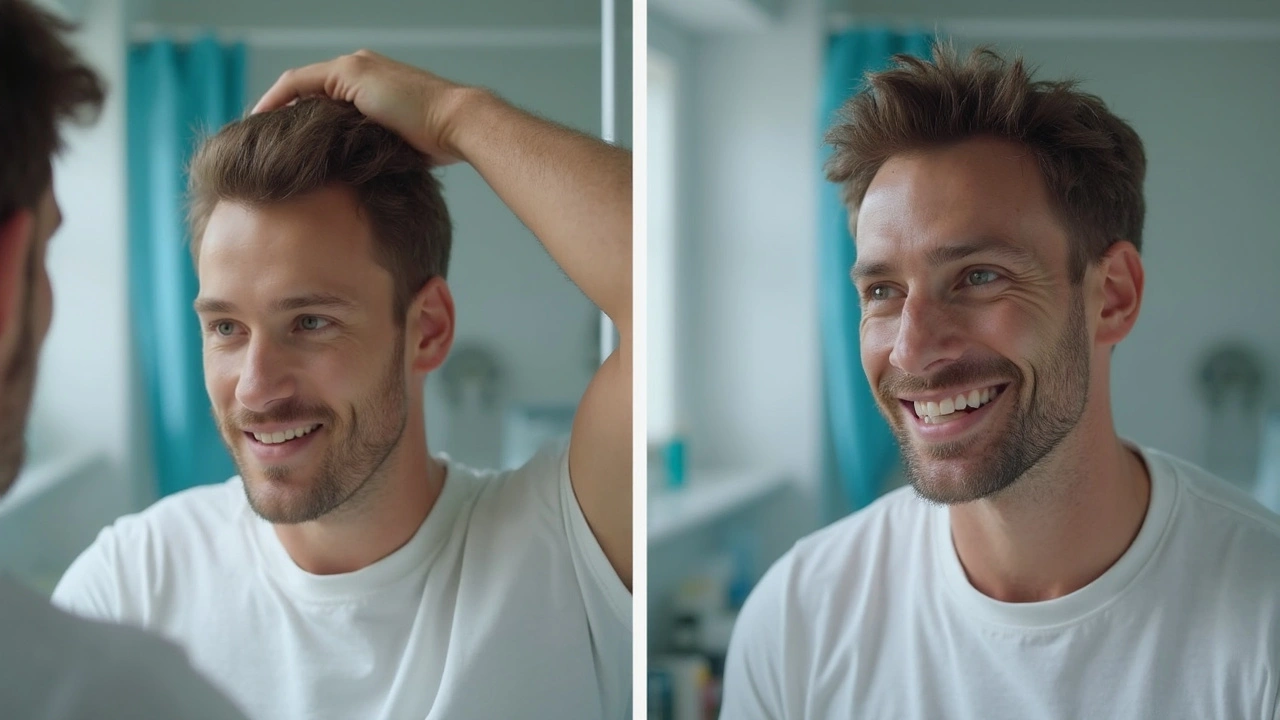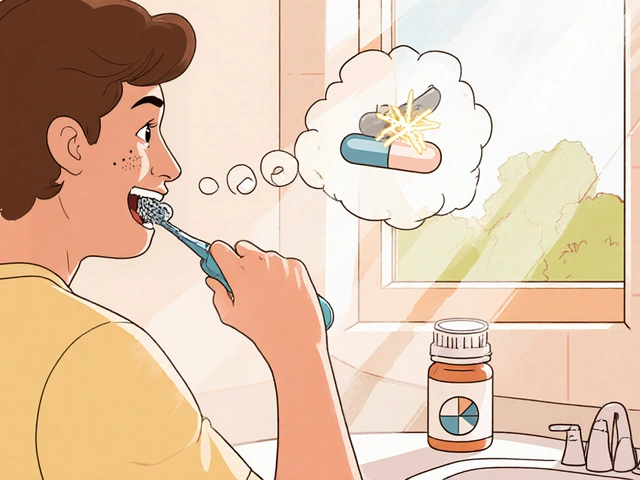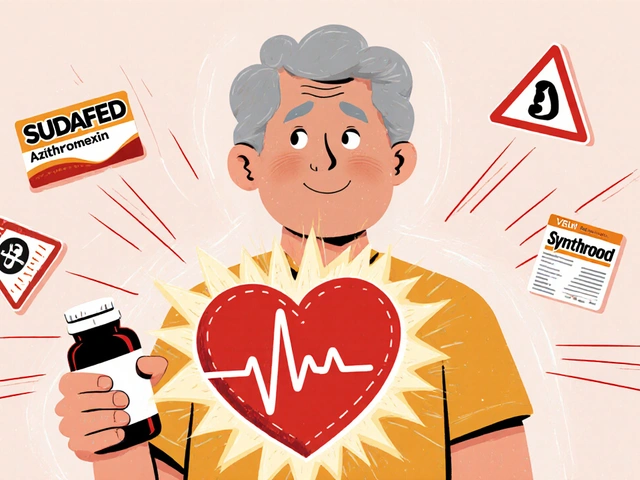Ever stood in front of the bathroom mirror, fingers tracing your hairline, just trying to convince yourself it’s not retreating faster than your favorite band’s world tour? Same here. When I first heard about Rogaine, it sounded like one of those late-night TV fixes—big promises, no evidence. except this time, there was some science. Turns out, Rogaine (the brand name for minoxidil) is no miracle, but it isn't snake oil either. If you're thinking about getting it, using it, or just plain curious, there’s a lot under the cap—tangles of studies, side effects, questions, and surprisingly practical routines. Let’s pull it apart.
How Rogaine (Minoxidil) Actually Works
Rogaine didn’t start out as a hair product. Back in the 1970s, minoxidil was studied as a blood pressure pill. Researchers noticed it had this rather odd “bonus” side effect—people began sprouting new hair, which, if you’re balding, isn’t the worst trade-off. So, the idea came: why not put it on the scalp instead? That's how topical minoxidil was born. Here’s where it gets interesting: the actual way it helps grow hair is still not 100% understood. Scientists think minoxidil widens blood vessels on the scalp, which pumps more oxygen and nutrients into your hair follicles. You’re basically giving your scalp a little more firepower each day. This slow, subtle shift pushes more hair into the growth (anagen) phase, which means less fallout and (hopefully) a thicker head of hair.
One thing people get wrong: minoxidil does not regrow hair on completely bald areas. It works best on those who still have some fine or thinning hair left—especially on the crown. That patch at the back of your head? Rogaine has earned its reputation there. But if you haven’t seen a strand there in years, no topical magic will bring it back. And guys aren’t the only ones who buy this stuff. Loads of women use the special 2% version (while guys often go for the 5%). So, it’s not just a “middle-age guy crisis” thing—it’s a universal confidence boost. If you’re after regrowth at the temples or the “hairline,” sorry to break it to you, but results there can be spotty. The FDA only approved it for the crown area. Still, some people try it off-label and swear by it—you’ll just have to manage those expectations.
New users often worry about the “shedding” in the first few weeks. Yeah, hair may fall out faster than normal, but don’t panic. This is a typical sign it’s working; old hairs make way for newer, thicker ones. Stick with it, and the panic usually turns to cautious optimism.
What to Expect: Results, Timeline, and the Real Limitations
So, how soon will you see results with Rogaine? Don’t schedule any hair-flip selfies for at least four months. That’s because each hair follicle has its rhythm—nothing you put on your scalp can make it pump out new hair in a week. Most folks who see results notice a difference between four to six months. Even the company admits it can take up to a year for full potential. If you think about quitting because you haven’t seen peach fuzz instantly, remember: patience is everything.
Consistency is key. Rogaine is not a weekend treatment; it’s a twice-daily commitment. Miss too many applications, and you’re letting your progress slip away. Skipping a day won’t ruin you, but making it a habit will. One wild thing people don’t realize—when you stop using Rogaine, the hair you gained will almost always fall out in a few months, and you’ll return to where you started. This is not a cure; it’s maintenance.
This chart sums up what to expect:
| Time After Starting Rogaine | What You May Notice |
|---|---|
| 0-2 weeks | Possible increased shedding; nothing to worry about. |
| 1-3 months | No real difference, or maybe thinner hair. Stick with it. |
| 4-6 months | Potential fuzz or thicker patches, slower hair loss. |
| 1 year | Maximum improvement (if you’re responsive). |
Rogaine does not work for everyone, and what counts as “successful” can mean anything from barely noticing less hair on your pillow to finally seeing your scalp a bit less in harsh bathroom lights. Clinical trials found around 40%–60% of men with early to moderate hair loss saw moderate regrowth (not runway-ready, but visible). Women get a boost, too, but usually less dramatic. If you’re already completely bald in some spot, odds are low. For the best shot, start early. Once the follicle closes for good, no cream can wake it up.

How to Use Rogaine Effectively and Avoid Common Mistakes
Now, onto the nitty-gritty: how you actually use Rogaine so you don’t waste time (or bottles). First, pick the right version. There’s a liquid and a foam. If you’ve got a sensitive scalp or don’t like the greasy feeling, most guys (and many women) find the foam easier. The liquid, though, is often cheaper for the same results. The most important thing? Apply to a dry scalp—water can dilute the effect. Separate your hair to expose the thinning area, then apply the correct amount: the dropper for liquid or half a cap of foam each dose. Gently massage it in, but don’t drown your head; more does not mean better. A little bit goes a long way. Wash your hands and, if you have a partner, warn them not to rub their face or arms right after you’ve put it on—unless they want new hair surprises.
Here’s a simple routine to maximize results:
- Apply once in the morning and once at night. Pick times you can remember, like brushing your teeth.
- Don’t pile on more hoping for faster regrowth; this just causes irritation and wastes product.
- Let it dry fully before styling, going to bed, or wearing hats. Otherwise you'll wipe it off (and yes, it can stain pillowcases if it's not dry).
- Don’t wash or wet your hair for at least four hours after use. That gives it time to sink in and work.
- If you mess up a dose, don’t double up. Just pick up where you left off.
Some hacks can help. Microneedling, for example—a rolling device with tiny needles—has been shown in studies to improve minoxidil’s absorption (the Journal of Cutaneous and Aesthetic Surgery, 2013, showed nearly double the improvement over minoxidil alone). Ask your dermatologist before adding new gadgets, though. Other than that, just keep the bottle at room temperature and out of direct sunlight, so it lasts until the last drop.
Potential Side Effects, Warnings, and When to Stop
Every guy swapping Rogaine horror stories at the barber shop will eventually talk about side effects. Yeah, they’re real, but most are mild. You might get dry, flaky skin, an itchy scalp, or a bit of redness for a few days as your body gets used to the new routine. These usually fade as you keep going. If it doesn’t, folks usually switch to the foam (it’s alcohol-free and less irritating). Rare but possible: Some see unwanted hair on the forehead or face. Easy solution—keep it right on the scalp and wash hands well.
Some other things to keep in mind: Let’s say you have heart issues—you should check with your doctor, since minoxidil does hit blood vessels (even if you’re just putting it on top). Allergic reactions, while rare, can show up as hives, swelling, or chest pain, which is your body’s cue to stop and call your doctor. The few times my wife, Imogen, spotted a weird rash on my scalp, I took a break, just to be safe. Also, don’t use Rogaine along with other topical products unless you’re guided by a doctor, since who knows what wild chemical reaction might happen otherwise. If you notice swelling in hands or feet, rapid heartbeat, or severe scalp irritation, put the bottle down and go see a professional—it’s better to lose a bit of progress than risk your overall health.
Women should stick to 2% unless their doc says otherwise—higher concentrations can cause increased unwanted facial hair. And if you’re pregnant or breastfeeding, skip Rogaine altogether; the risks for babies and moms haven’t been fully explored.

Answering Big Questions: Costs, Expectations, and Alternatives
So, what about the cost? Rogaine isn’t dirt cheap, but it’s also not up there with luxury shampoo. Most pharmacies and online sites will sell a three-month supply for about $40–$60. Over a year, you’re looking at a few hundred bucks—cheaper than hair transplants or endless salon “thickening” treatments. Keep an eye out for generic minoxidil options, too. They’re usually the same active ingredient, sometimes even made by the same factories, but for half the price. My own medicine cabinet has switched between store brands depending on what’s on sale—works just the same for me.
One thing that really helps manage expectations is to realize the limits. Even at its best, Rogaine brings “modest” regrowth—think: your friends notice your hair looks fuller, but nobody’s mistaking you for 1990s Brad Pitt. If you start early—before shiny bald patches appear—your chances of success go way up. If you’re losing hair fast and furiously, or nothing’s happening after a year, it may be time to look at alternatives.
- Finasteride: A pill that blocks the hormone causing hair loss—very effective for men, though with real possible side effects for libido and mood.
- Hair Transplants: Pricey, sure, but with skilled hands, the results can be natural and permanent (if you have a solid “donor area”).
- Shampoos and Lotions: These don’t regrow hair, but can make what you have look thicker.
- Lifestyle tweaks: More sleep, less stress, and better nutrition all support healthy hair, even if they won’t reverse baldness.
For many, Rogaine is simply a helpful tool in the bigger toolbox. It won’t work on everyone, and skipping doses or quitting early almost always leads to disappointment. But stick with it, don’t expect magic, and it’s possible you’ll see more hair—and, maybe, a little boost of confidence every morning.







Leah Hawthorne
June 14, 2025 AT 10:35 AMHonestly, I was skeptical at first too – the whole “miracle cure” vibe feels like click‑bait. But the way you broke down the history of minoxidil makes it feel less like a snake‑oil pitch and more like a legit option. I appreciate the reminder that it works best on thinning areas rather than completely bald spots. The shedding phase can be freaky, but you nailed why it’s actually a sign of progress. Thanks for the practical tip about applying to a dry scalp – I’ll definitely try that.
Brian Mavigliano
June 15, 2025 AT 14:22 PMLet’s not pretend Rogaine is a panacea; it’s basically a chemical nudge for follicles that are already flirting with death. It’s fascinating how a blood‑pressure pill turned into a scalp‑savior – talk about serendipity. Yet, the hype machine pumps out promises that sound like a utopian hair‑topia. If you’re still hoping for a full‑blown renaissance on the crown, you’ll be disappointed. Bottom line: it’s a modest boost, not a miracle.
Emily Torbert
June 16, 2025 AT 18:08 PMi totally get the fear of the early shedding its like losing a battle to win the war but hang in there the new growth will show up eventually it takes patience and consistency and i think it’s cool you mentioned the foam vs liquid its good to know which feels better for your scalp i’ll try the foam cause i hate the greasy feel of liquid but thanks for the solid rundown hope it helps everyone out there
Rashi Shetty
June 17, 2025 AT 21:55 PMFrom a clinical perspective, the evidence supporting minoxidil’s efficacy is modest yet statistically significant. It is imperative to set realistic expectations, especially concerning the crown‑area limitation approved by regulatory bodies. 📊 Moreover, the risk of off‑label application on the hairline warrants a cautious approach. The shedding phenomenon, while alarming to novices, aligns with the telogen‑exogen shift documented in dermatological studies. In sum, the therapeutic window is narrow but genuine.
Queen Flipcharts
June 19, 2025 AT 01:42 AMIt is unpatriotic to dismiss a home‑grown solution like Rogaine merely because it is marketed by a multinational corporation. American innovation has delivered this remedy, and we should support its widespread use rather than turn our backs on it. The product’s efficacy, albeit modest, demonstrates the value of domestic pharmaceutical research. Encourage fellow citizens to employ it responsibly, ensuring our collective confidence remains unshaken.
Yojana Geete
June 20, 2025 AT 05:28 AMOh my gosh, the drama of the first two weeks is real! You’re like, “Is my scalp erupting or is this the magic?” It’s practically a soap‑opera with every shed hair. The foam feels like a cloud, while the liquid is that greasy villain you love to hate. And don’t even get me started on the midnight “did I forget my dose?” panic. Just breathe, darling, the plot thickens and so does your hair.
Jason Peart
June 21, 2025 AT 09:15 AMHey Leah, totally see where you’re coming from – I was in the same boat last year. The key for me was setting a reminder on my phone, basically treating it like brushing teeth. I also mixed a microneedle session once a month which seemed to boost absorption (don’t forget to ask a doc first!). Sure, the shedding was creepy, but after about six weeks I started seeing that faint fuzz you mentioned. Stick with it, and you’ll get that confidence boost you’re after.
Hanna Sundqvist
June 22, 2025 AT 13:02 PMBrian, you’re overlooking the hidden agenda – why does a blood pressure drug get repackaged as a hair product? Big pharma loves to divert attention from more sinister experiments. They probably seed the “shedding” story to make us think it’s working while they’re collecting data on how our bodies respond. Stay alert, everything isn’t as innocent as it seems.
Jim Butler
June 23, 2025 AT 16:48 PMCongratulations on taking the proactive step; consistency will be your greatest ally in this journey. 📈 Remember to apply after your nighttime routine to avoid accidental transfer onto pillows, and give the product sufficient time to dry before any styling. Monitoring progress with photos taken under similar lighting will provide a clear picture of any incremental changes. Should you experience persistent irritation, consider switching from the liquid to the foam formulation. Best of luck, and may your confidence grow alongside your hair.
Ian McKay
June 24, 2025 AT 20:35 PMGrammar matters.
Deborah Messick
June 26, 2025 AT 00:22 AMWhile I respect the enthusiasm of those who champion Rogaine, it is essential to acknowledge the limitations imposed by the FDA’s crown‑area indication. The literature consistently demonstrates that outcomes on the hairline are variable at best, and patients should be cautioned accordingly. Moreover, the financial commitment over a year can be non‑trivial for many households. In a climate where consumer products are often over‑promised, a sober appraisal is both necessary and responsible.
Jolanda Julyan
June 27, 2025 AT 04:08 AMI find it quite astonishing that despite the plethora of anecdotal testimonies extolling the virtues of minoxidil, the scientific community remains measured in its endorsement. The data indicate a modest increase in shaft thickness rather than a dramatic reversal of alopecia. Nevertheless, when one considers the psychosocial impact of a fuller appearance, even minor regrowth can be transformative for self‑esteem. It is, therefore, paramount that users maintain realistic expectations and adhere to the prescribed regimen without succumbing to the lure of “miracle” shortcuts. In the grand scheme of hair restoration, Rogaine occupies a niche that is best understood as an adjunct rather than a standalone solution.
Kevin Huston
June 28, 2025 AT 07:55 AMLet’s cut the crap – Rogaine is a double‑edged sword. On one hand, you get that faint buzz of new growth, on the other you risk scalp irritation that can feel like a sunburn. The cost isn’t negligible either; at $50 a month you’re essentially funding a multi‑year trial. If you’re not seeing any trans‑lucent fuzz after six months, it might be time to pivot to finasteride or, if you have the cash, a transplant. Bottom line: treat it as a month‑to‑month experiment, not a lifelong commitment.
Amanda Hamlet
June 29, 2025 AT 11:42 AMJason, you mentioned “microneedling”, but let’s be clear: the evidence is still preliminary and many users report increased irritation. If you’re already dealing with an itchy scalp, adding needles may exacerbate the condition. Stick to proven basics – consistent application and patience – before you start tinkering with invasive methods.
Nolan Jones
June 30, 2025 AT 15:28 PMDude, the key is setting a simple reminder – maybe on your phone or a sticky note on the bathroom mirror. Also, if you notice any burning, give your scalp a break for a day and then resume. Most people mess up by washing too soon; wait the full four hours. Keep it chill and you’ll see the slow progress.
Jada Singleton
July 1, 2025 AT 19:15 PMJim, while your encouragement is appreciated, it’s important to note that not all users will experience noticeable results, especially those with extensive balding. Over‑optimistic language can set unrealistic expectations, leading to disappointment when the product’s modest efficacy becomes apparent.
Emily Rossiter
July 2, 2025 AT 23:02 PMGreat summary! For anyone nervous about starting, remember that consistency beats intensity. Stick to the twice‑daily schedule, give it time, and you’ll likely see subtle improvements without the drama.
Renee van Baar
July 4, 2025 AT 02:48 AMThank you for the thorough breakdown – I’ve been on the fence for months. The detailed timeline really helps set my expectations, and I appreciate the tip about using foam if the liquid feels greasy. I’ll start with the 5% foam and keep a photo log to track changes. Here’s hoping the shedding phase won’t be too alarming, and that my hairline stays intact.
Mithun Paul
July 5, 2025 AT 06:35 AMWhile the author’s overview is generally accurate, it neglects to address the potential systemic absorption of minoxidil, which, albeit minimal, can precipitate cardiovascular effects in susceptible individuals. Consequently, a thorough medical evaluation is advisable before initiating therapy.
Sandy Martin
July 6, 2025 AT 10:22 AMHaving navigated the hair loss journey myself, I can attest that the emotional rollercoaster described in the article mirrors my own experience. The initial shedding period, though distressing, is a physiological reset where dormant follicles are pruned to make space for healthier growth. Patience truly becomes a virtue; I waited a full eight months before observing any tangible improvement, underscoring the importance of disciplined adherence. The choice between foam and liquid often hinges on individual scalp sensitivity; my own preference for foam stemmed from its reduced irritation profile. Moreover, the routine of applying after a shower, as suggested, minimizes product displacement and maximizes absorption. \\n
\ Consistently documenting progress with weekly photographs taken under uniform lighting conditions proved indispensable for objective assessment, stripping away the bias of daily visual fluctuations. In my case, the incremental thickening became evident only after the fifth month, when strands began to feel denser upon combing. \\n
\ It is also worth noting that lifestyle factors, such as adequate protein intake, regular exercise, and stress reduction, acted synergistically with minoxidil, amplifying its efficacy. While some users may experience scalp dryness, a modest addition of a gentle, fragrance‑free moisturizer can alleviate discomfort without compromising the medication’s action. \\n
\ Crucially, discontinuation of treatment precipitates a reversal of gains within a few months, reaffirming minoxidil’s role as a maintenance therapy rather than a permanent cure. This phenomenon underscores the necessity of realistic expectation setting: we are managing the health of existing follicles, not resurrecting ones that have irreversibly miniaturized. \\n
\ For those considering adjunctive strategies, low‑level laser therapy and microneedling have demonstrated additive benefits in controlled studies, though one should consult a dermatologist before integrating such modalities. \\n
\ In sum, Rogaine offers a modest yet meaningful improvement for many, provided the user embraces a long‑term, disciplined approach, aligns complementary lifestyle habits, and remains vigilant to potential side effects. The journey is not swift or miraculous, but it can restore a measure of confidence and visual fullness that many find worthwhile.